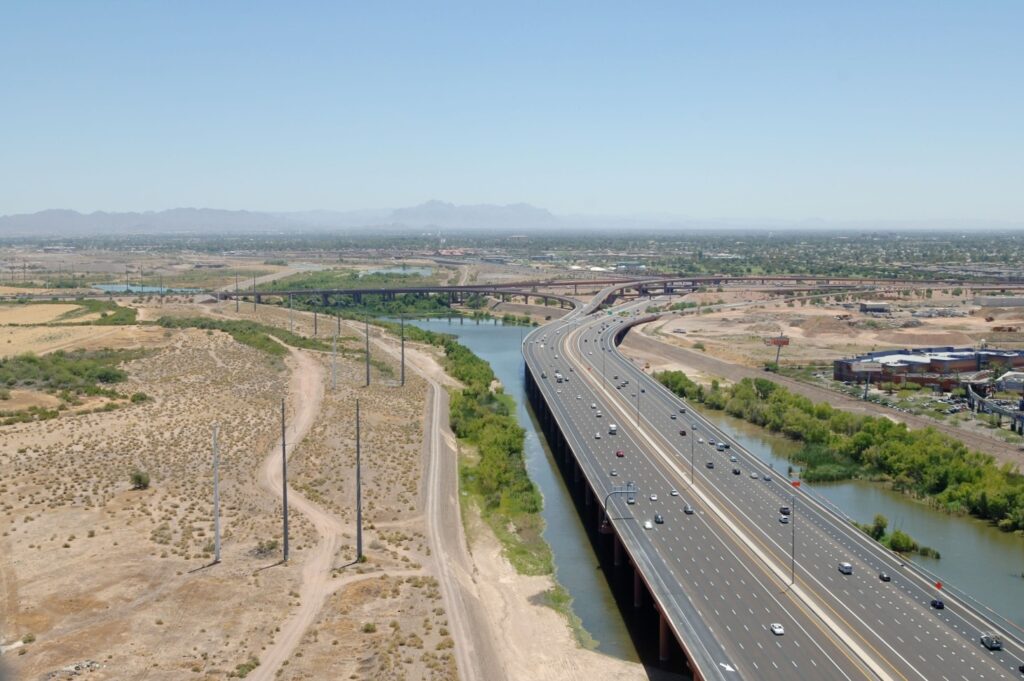The Associated General Contractors of America (AGC) has called infrastructure “one of our greatest assets, as well as one of our most important responsibilities.” Bridges and roads across the country are in dire need of upgrades, and it’s going to take renewed public investment and innovative builders to get the job done. From pioneering new methods to solving immense logistical challenges, Sundt has remained a top bridge builder for the past half-century—and our best work still lies ahead of us.
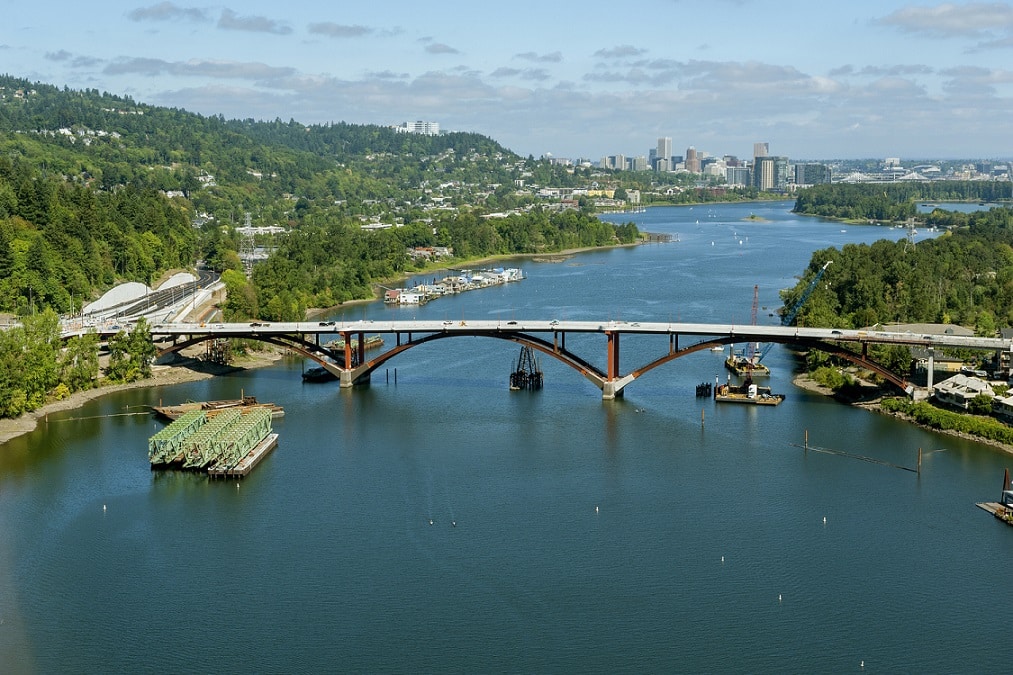
The Bridge that Put a Town on the Map
In the early 1960s, the London Bridge in England was sinking into the River Thames. Meanwhile in America, Sundt was making a name for itself pioneering an innovative bridge construction technique known as soffit fill. When the city of London auctioned off the historic bridge to raise funds for a replacement, plans were made to relocate the structure to Lake Havasu City, Arizona—at the time a brand-new development in the middle of the desert.
In need of a faster and lower-cost alternative than falsework, and one that could still handle the arches’ parabolic shape, Sundt developed the soffit fill method. Soffit fill involves building up an earthen mound as high as the bottom of the bridge to be built. Crews then form and place a concrete waste slab on top, and the entire bridge is built on top of that. When finished, the mound and the waste slab are removed. For the London Bridge, this approach worked flawlessly.
While there were 130,000 tons of granite in the original bridge, only 10,000 tons were brought to Lake Havasu for the outer-facing blocks, most of which were cut down to form a skin. Once the new five-span structure was complete, Sundt applied the facing stones (each weighing 1,000 to 8,000 pounds), matching their original locations.
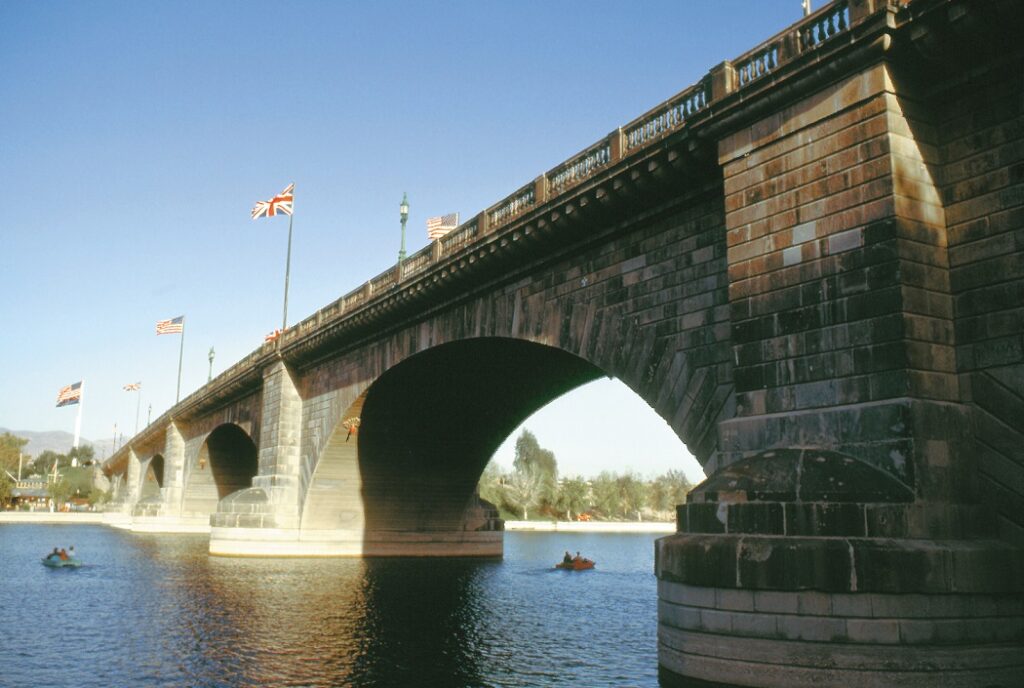
Even before it was finished in 1971, the bridge captivated people—including a young John Carlson, who today is Sr. Vice President and Strategic Business Director of Sundt’s Transportation Group. “I was 11 years old. My father, who worked for Sundt for 40 years, and I were driving to meet family in Nevada for Christmas,” John recalled. “We stopped in Lake Havasu and walked the site with the project manager. He explained how they took the bridge apart piece by piece in London, numbered each piece, shipped them to Arizona, and then started putting each one back in its original position on the structure Sundt built. I remember just being amazed. Fifty years later, I still am.”
The Bridge that Met Texas-Sized Expectations
The 12 illuminated stainless steel 300-ton concrete arches that form the backbone of the West 7th Street Bridge in Fort Worth, Texas, are an engineering and construction marvel. Using conventional techniques to remove and replace the nearly 100-year-old bridge would have meant closing the crossing over the Trinity River for a year or more. This was a non-starter for Fort Worth as 7th Street is the key roadway that links downtown to the cultural district, as well as the famous annual Fort Worth Stock and Rodeo Show.
Instead, an expedited schedule was set forth, and Sundt came up with a creative approach to meet it. We pre-cast and stored the arches off site, and our team used 3D modeling to plan and build them, as well as sequence the setting of the arches and critical floor beams. We began constructing the columns that supported the arches around the same time we started building the arches themselves. This alternative phasing helped to speed up the work and eliminated road closure during column construction.
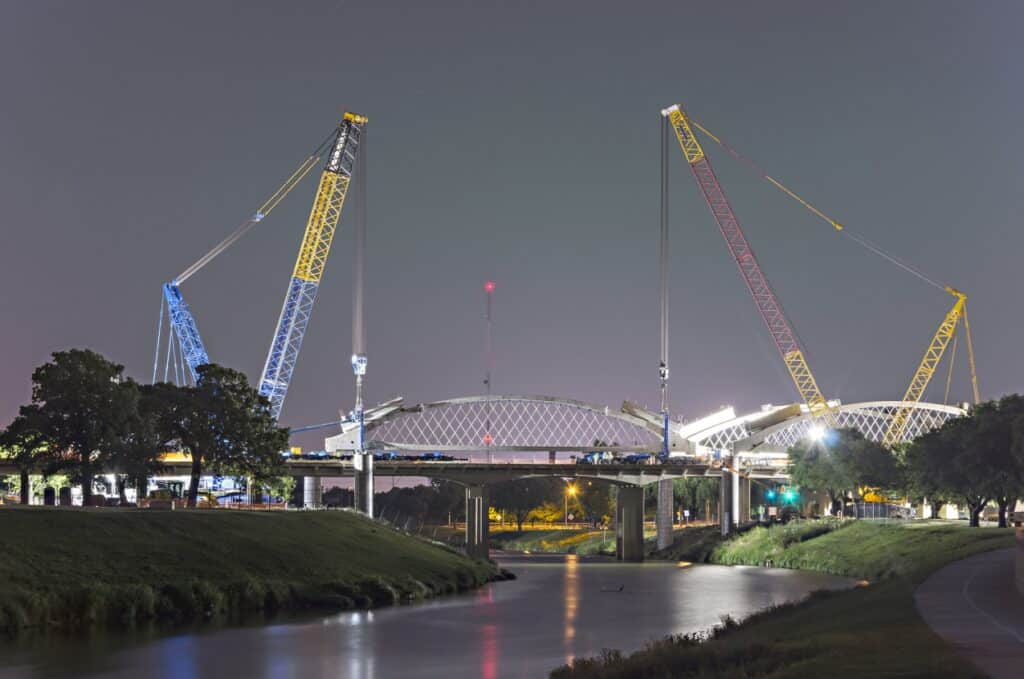
In May 2013, the first completed arch was loaded onto two self-propelled modular transport trailers and slowly driven the four blocks from the casting yard and across the old bridge. Here, twin Liebherr 1400 cranes lifted and set it into place on new foundations located alongside the original structure.
The remaining arch setting occurred over the next 30 days, mostly at night to minimize traffic disruptions. Once all of the arches were placed, the team closed and demolished the old bridge and constructed the new one in its footprint. Given the size and shape of the precast, post-tensioned concrete arches, there is literally no other bridge like it in the world. The West 7th Street Bridge re-opened to traffic just 120 days later, a month sooner than originally planned.
The Bridge that Side-stepped a Slowdown
The Sellwood Bridge in Portland, Oregon is a vital artery for local travel and trade. As the only crossing over the Willamette River for several miles in either direction, it’s the state’s busiest two-lane bridge. When the aging infrastructure reached the end of its useful life, it had to be replaced quickly—but in a way that wouldn’t impact the surrounding community or the river’s ecosystem.
Sundt’s solution was a “shoofly” bridge. In other words, we lifted the center section of the old bridge deck and truss with hydraulic jacks, slid it over onto a set of temporary piers, then connected it to temporary approach spans.
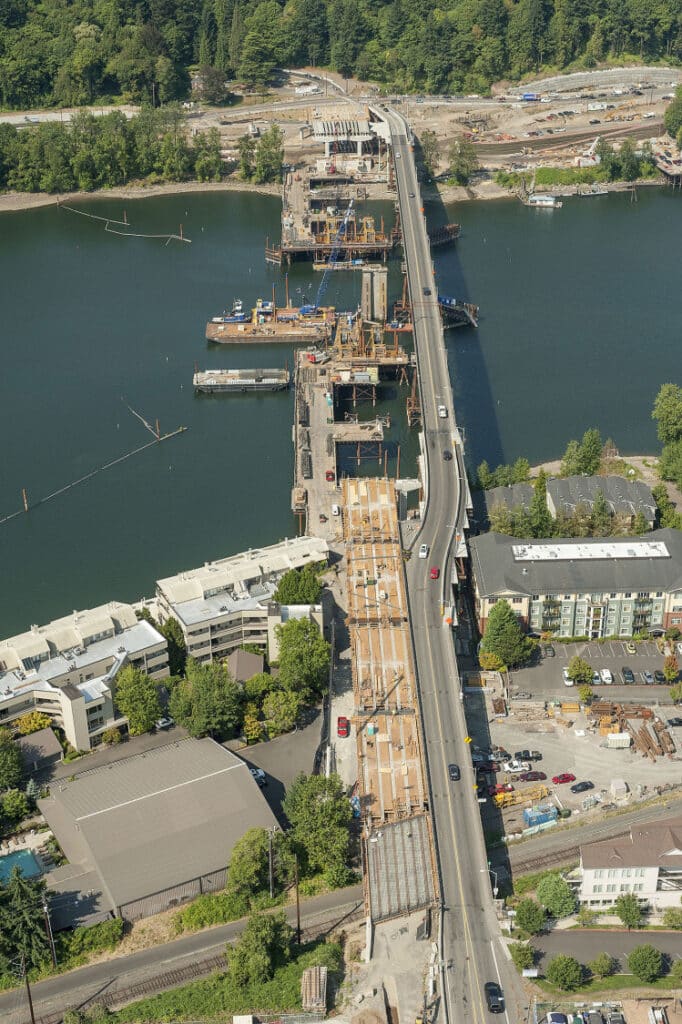
This allowed the new bridge to be constructed in its final alignment while traffic continued to flow steadily across the river on the old bridge. With this alternative approach, the bridge was closed for only 20 days total before its finish in 2016. The shoofly method also shortened the total schedule by over a year and reduced the cost to the owner by more than $5 million.
The Makings of a Top Bridge Builder
For the last 50 years, we’ve found new ways to keep traffic moving, reduce environmental impacts, and build efficient, durable bridges. We maintain longstanding, collaborative relationships with owners, designers and communities to ensure that we build to specifications, achieve project goals and meet stakeholder needs. At the most basic level, our people thrive on being innovative and solving problems together. For that reason, Sundt continues to prove itself as a bridge builder of choice.
